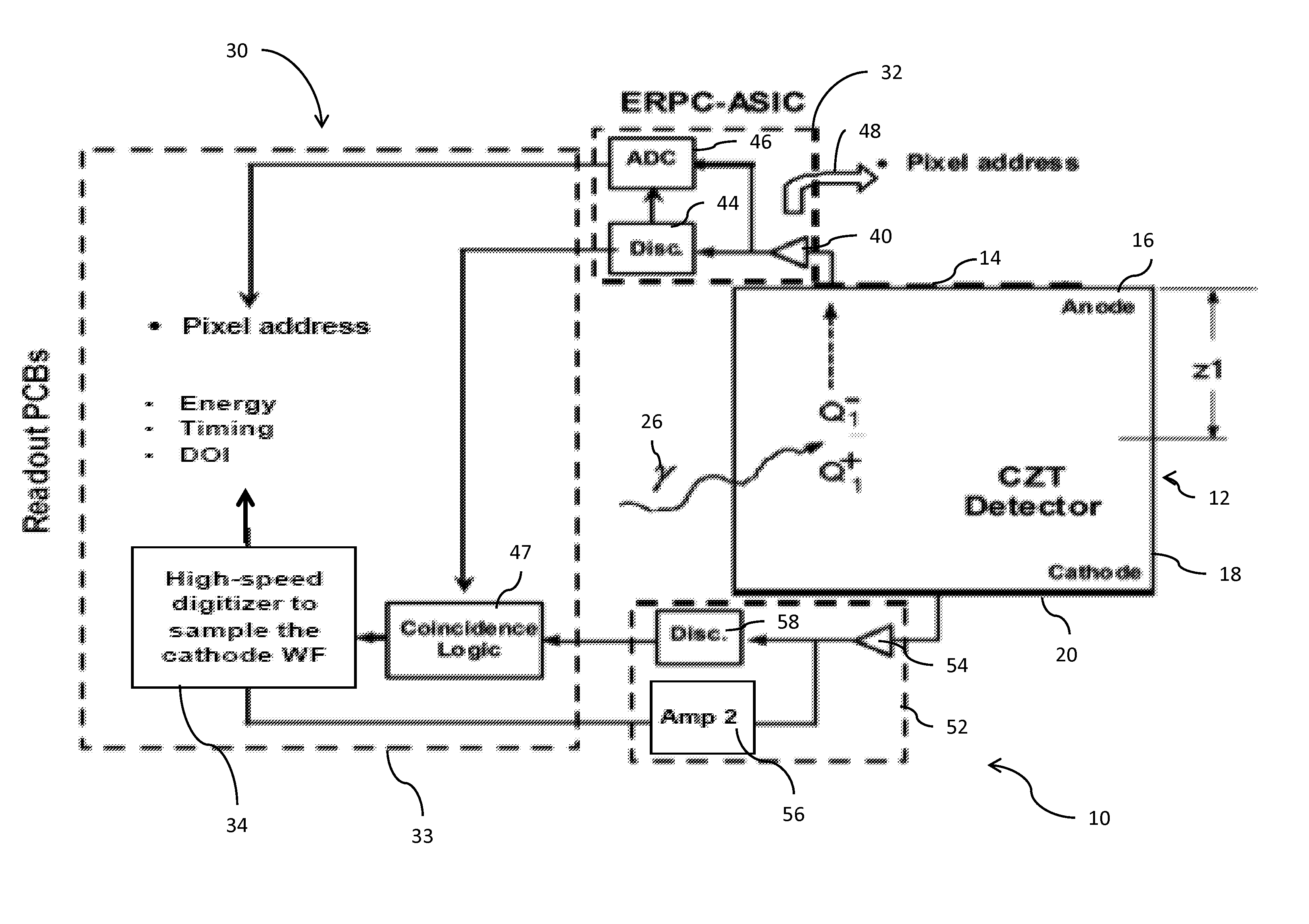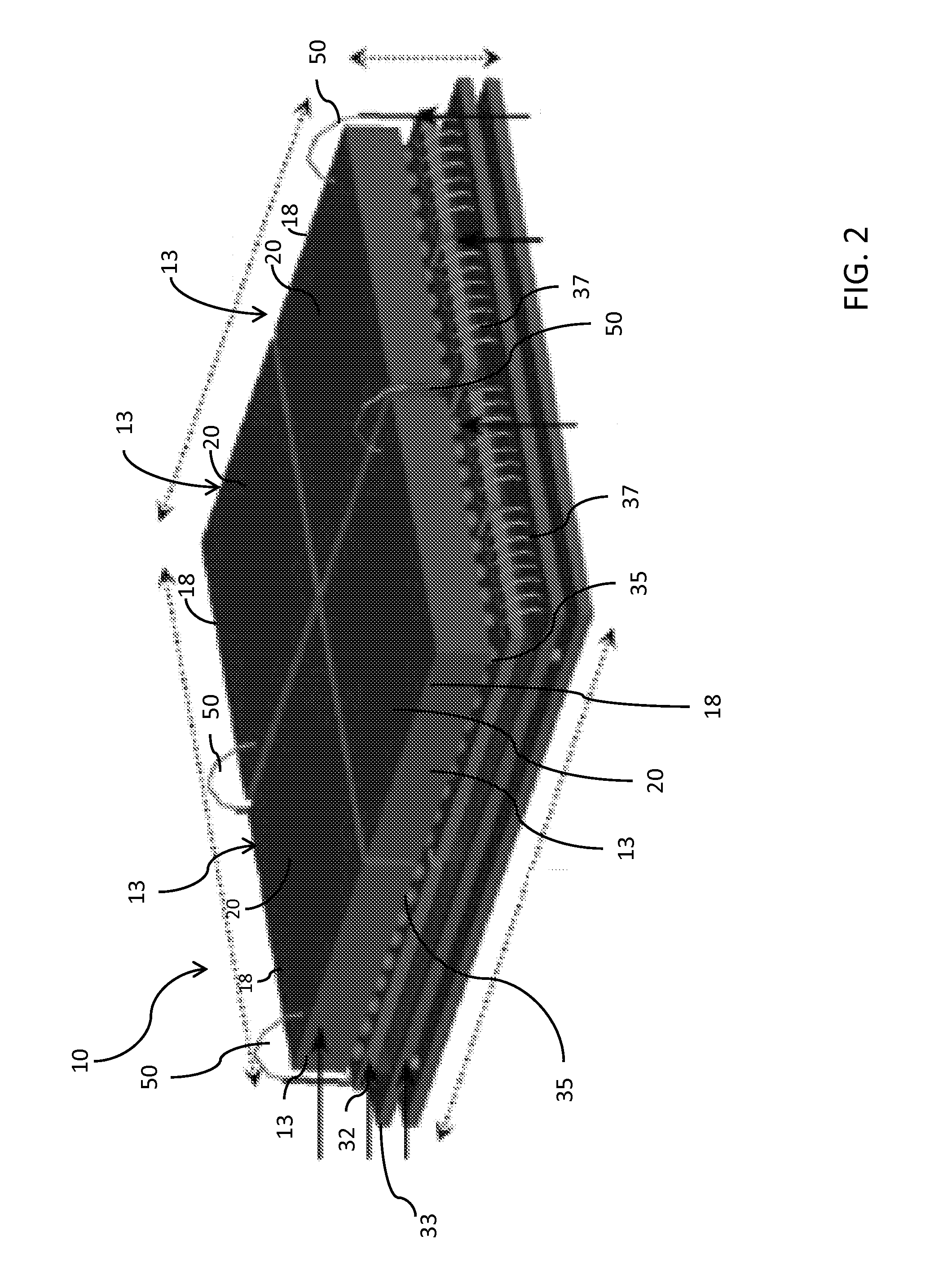Detector apparatus having a hybrid pixel-waveform readout system
a pixel-waveform readout and detector technology, applied in the field of gamma ray and neutron detectors, can solve the problems of large pmts, limited portability or availability of some gamma ray detection systems, and large shielding
- Summary
- Abstract
- Description
- Claims
- Application Information
AI Technical Summary
Benefits of technology
Problems solved by technology
Method used
Image
Examples
Embodiment Construction
[0013]An example embodiment of the invention provides, among other things, a gamma ray radiation detector apparatus. The detector apparatus includes at least one solid state gamma ray detector having one or more anode pixels and one or more cathodes. Preferably, the gamma ray detector is highly pixelated (e.g., having at least a few hundred μm pitch size). A hybrid pixel-waveform (HPWF) readout system is provided to read out signals from the one or more anode signals and the one or more anodes. Particularly, the HPWF readout system receives and processes signals from the one or more anode pixels to determine an interaction location, and in coincidence receives and processes a waveform from the one or more cathodes to determine energy, timing, and / or depth-of-interaction (DOI). The solid state gamma ray detector can be made of a semiconductor material, such as a room temperature semiconductor material. Example semiconductor materials for the solid state gamma ray detectors include Cd...
PUM
 Login to View More
Login to View More Abstract
Description
Claims
Application Information
 Login to View More
Login to View More - R&D
- Intellectual Property
- Life Sciences
- Materials
- Tech Scout
- Unparalleled Data Quality
- Higher Quality Content
- 60% Fewer Hallucinations
Browse by: Latest US Patents, China's latest patents, Technical Efficacy Thesaurus, Application Domain, Technology Topic, Popular Technical Reports.
© 2025 PatSnap. All rights reserved.Legal|Privacy policy|Modern Slavery Act Transparency Statement|Sitemap|About US| Contact US: help@patsnap.com



